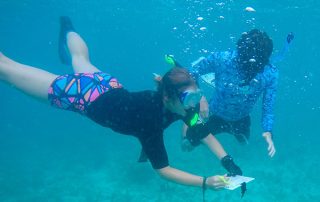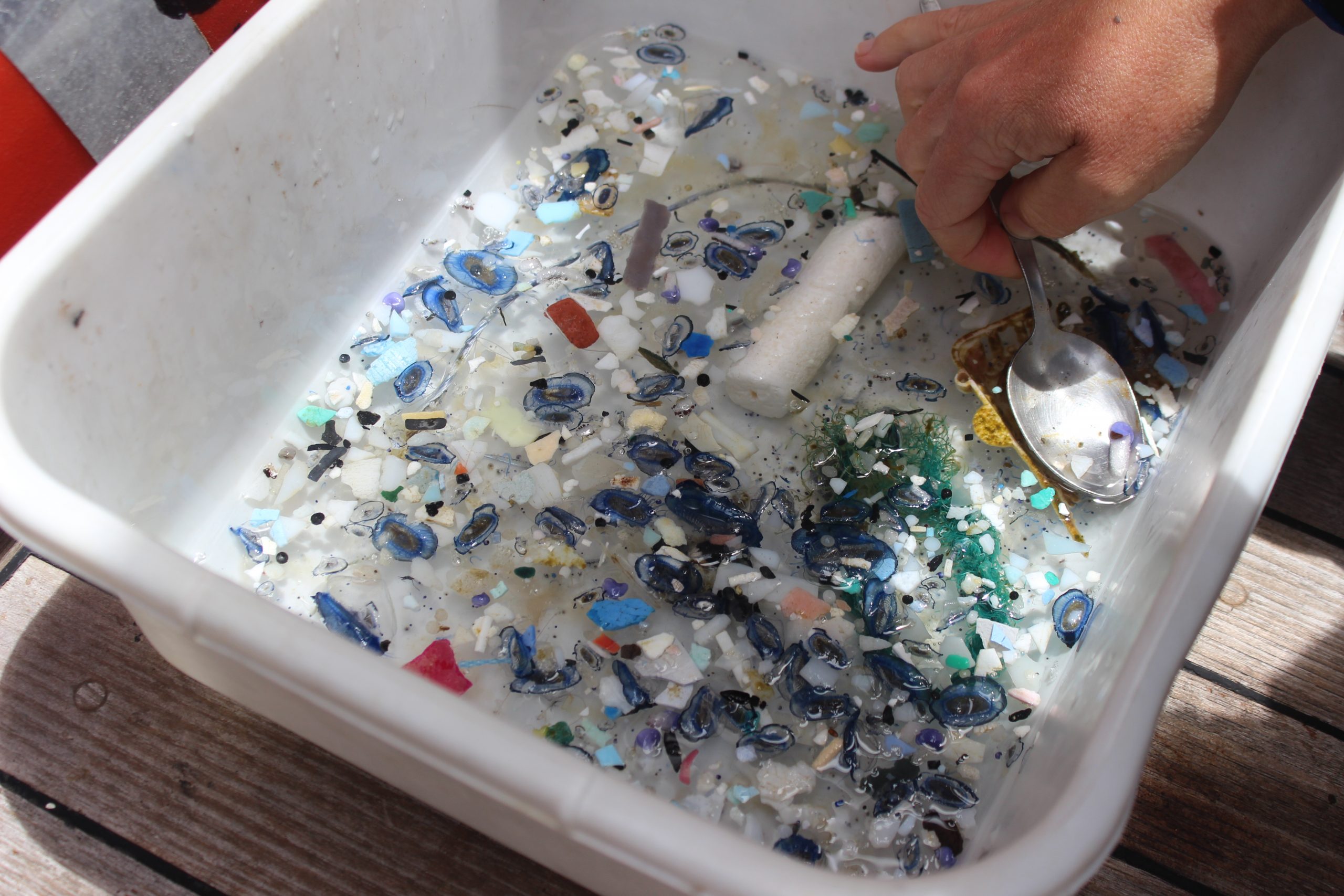Field Oceanography
Research @ SEA
Field Oceanography
While at sea, our students learn how to safely deploy and recover modern sampling instruments, conduct chemical and biological laboratory research, analyze oceanographic data, and operate a fully equipped research vessel. The suite of sampling conducted depends on the cruise track and student project needs. SEA’s scientific work occurs both far offshore in the open ocean and along a diversity of coastal ecosystems. Voyages frequently transit several oceanographic provinces and climate regimes, forming the basis for robust spatial comparisons; where historic data is available, temporal trends are examined. When SEA ships visit islands and mainland ports, coastal-to-offshore transects and studies of near shore processes and ecosystems are carried out. Click here for a list of the scientific equipment carried onboard our ships.
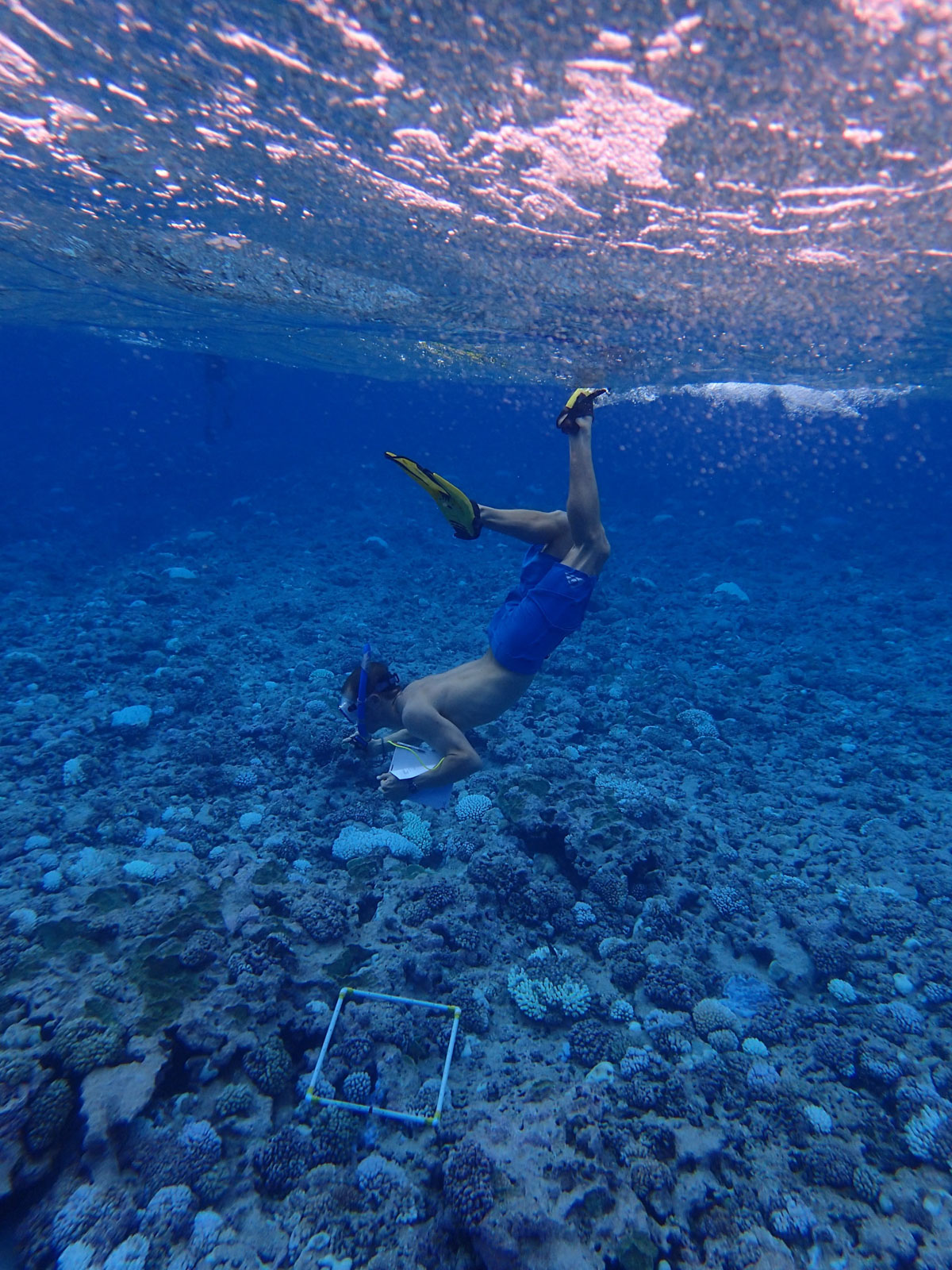
Coral health and ecology
SEA’s snorkel-based reef surveys utilize modified versions of the Coral Health Index (CHI) and Atlantic and Gulf Rapid Reef Assessment (AGRRA) methodologies. Student scientists identify and record coral diversity and health (amount of bleaching or disease), percent algae/seagrass/sponge cover, fish and invertebrate abundance and diversity, as well as numerous environmental parameters (e.g., temperature, salinity, pH, nutrients, bacteria). With repeated voyages and observations across the central Pacific, SEA documented massive coral bleaching associated with the unprecedented 2015/16 El Niño. Years later, SEA students detailed and confirmed the recovery of these very same reefs, demonstrating the resiliency of the marine environment.
SEA faculty and collaborators: Jeff Schell
Phytoplankton and bacteria
Phytoplankton (microscopic plants such as diatoms, dinoflagellates and coccolithophores) fix carbon into an organic form during photosynthesis and thus are the foundation of the marine food web. Broad taxonomic differences in nutrient requirements mean that as SEA sails from one region to another we observe concurrent changes in phytoplankton community composition and abundance. Direct measurements of seawater chlorophyll-a concentrations allow SEA students to estimate the quantity of phytoplankton, while net tows and microscope identification indicate which organisms are present.
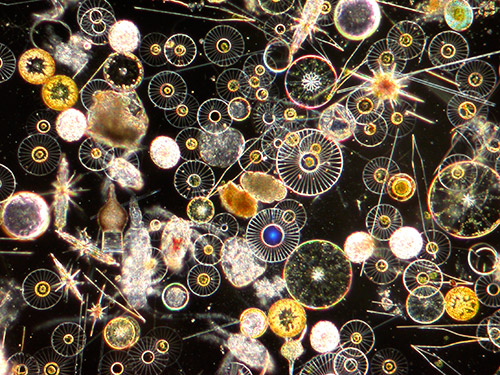
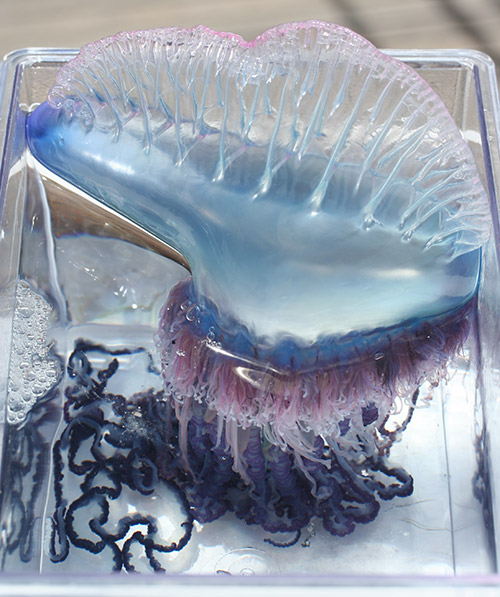
Zooplankton and other organisms
Zooplankton and micronekton (very small, freely swimming animals) graze on phytoplankton and small zooplankton, forming an important link in marine food webs and a significant vertical transport pathway for biological carbon. In turn, zooplankton are consumed by higher trophic levels including fish, sea turtles, sea birds and marine mammals. Through net tows and field observations, SEA Semester students explore the composition, diversity and geographic distributions of these populations and/or individual species of interest.
Nutrients and seawater chemistry
The chemical composition of the water column both indicates and drives biological activity. SEA research focuses on essential nutrients, such as nitrogen, phosphorus and silica, and dissolved oxygen. In most areas of the world’s oceans, the primary sources of these nutrients are land-based; in the open ocean other processes are also important. Direct measurements provide both nutrient and oxygen concentrations for water samples collected using the ship’s CTD-Carousel, allowing study of spatial- and depth-associated patterns. Nearshore, SEA students further examine the ways coastal runoff, waste/stormwater management, and pollution influence marine chemistry.
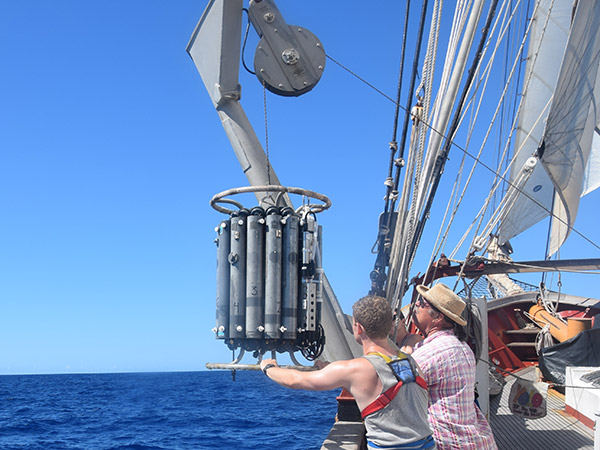
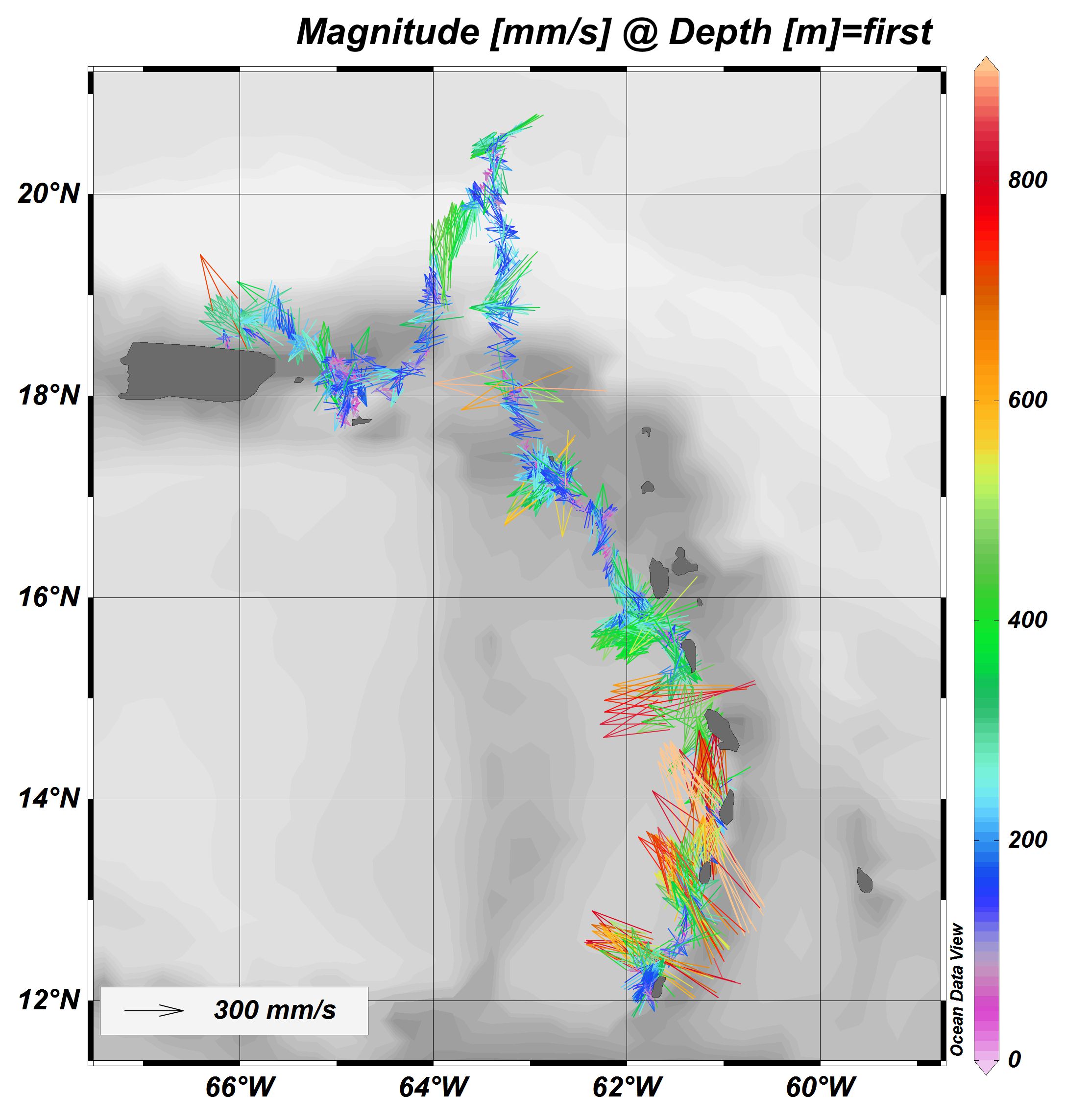
Ocean circulation
Distinct water masses interact with the atmosphere and each other in many ways and at many spatial and temporal scales. SEA’s physical oceanographic research draws heavily upon the data collected by our ADCP system, which provides real-time current speed and direction through the upper water column, and CTD profiles measuring temperature and salinity characteristics below the sea surface. With these tools, SEA Semester students explore local- to basin-scale circulation patterns in the surface and deep ocean, as well as their impacts on global climate, marine biology, and seawater chemistry. Our decades-long data archive offers students the opportunity to investigate temporal changes as well, such as shifting Gulf Stream conditions in the North Atlantic or El Niño Southern Oscillation dynamics in the tropical Pacific.
SEA faculty and collaborators: Ben Harden (SEA)
Marine sediments
Many of SEA’s research voyages travel across portions of the ocean where the seafloor is four to five kilometers deep, well out of reach of our geologic sampling equipment. Regardless of location, our single beam depth sounder, the CHIRP, provides a continuous record of the depth and shape of the seafloor. SEA students have watched the mid-ocean ridge come and go, and studied the sharp sides of seamounts and islands. When in coastal waters for longer periods of time, the ship’s gravity corer and Shipek grab sampler may be used to collect and examine recently-deposited sediments that offer insight into marine geologic processes.
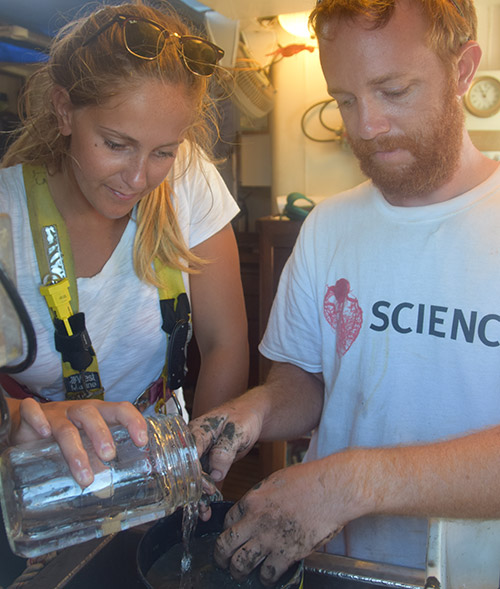
Papers and Publications
Harden, B.E.*, G. G. Gawarkiewicz, M. Infante, 2020. Trends in physical properties at the southern New England shelfbreak. J. Geophys. Res. e2019JC015784. doi: 10.1029/2019JC015784
Håvik, L., K. Våge, R. Pickart, B. Harden*, W.-J. von Appen, S. Jónsson and S. Østerhus, 2017. Structure and variability of the shelfbreak East Greenland Current north of Denmark Strait. J. Phys. Oceanogr. 47, 2631-2646. doi: 10.1175/JPO-D-17-0062.1
Behrens, E., K. Våge, B. Harden*, A. Biastoch and C. Böning, 2017. Composition and variability of the Denmark Strait Overflow Water in a high-resolution numerical model hindcast simulation. J. Geophys. Res.-Oceans 122. doi: 10.1002/2016JC012158
de Steur, L. , R. Pickart, A. Macrander, K. Våge, B. Harden*, S. Jónsson, S. Østerhus, and H. Valdimarsson, 2017. Liquid freshwater transport estimates from the East Greenland Current based on continuous measurements north of Denmark Strait. J. Geophys. Res.-Oceans 122, 93-109. doi: 10.1002/2016JC012106
Harden, B.* R. Pickart, H. Valdimarsson, K. Våge, L. de Steur, C. Richards, F. Bahr, D. Torres, E. Børve, S. Jónsson, A. Macrander, S. Østerhus, L. Håvik, and T. Hatterman, 2016. Upstream sources of the Denmark Strait Overflow: Observations from a high-resolution mooring array. Deep Sea Res. Pt. 1 112, 94-112. doi: 10.1016/j.dsr.2016.02.007
Palter, J., C.-A. Caron, K. L. Law*, J. Willis, D. Trossman, I. Yashayaev and D. Gilbert, 2016. Variability of the directly-observed, mid-depth subpolar North Atlantic circulation. Geophys. Res. Lett. 43, 2700-2708. doi: 10.1002/2015GL067235
Engels, M.*, L. Correia^, S. Piwinski^, L. Cheng, and E. Zettler*, 2014. Seasonal and decadal changes in distribution patterns of Halobates (Hemiptera: Gerridae) populations in the eastern tropical Pacific. Mar. Biol. 161, 1241-1250. doi: 10.1007/s00227-014-2414-x
Matthews, J.^ and J. Matthews, 2013. Comparing historical and modern methods of sea surface temperature measurement – Part 2: Field comparison in the central tropical Pacific. Ocean Sci. Discuss. 9, 2975-3019. doi: 10.5194/os-9-695-2013
Matthews, J.^, 2013. Comparing historical and modern methods of sea surface temperature measurement – Part 1: Review of methods, field comparisons and dataset adjustments. Ocean Sci. Discuss. 9, 2951-2974. doi: 10.5194/os-9-683-2013
Leichter, J., M. Stokes, J. Hench, J. Witting* and L. Washburn, 2012. The island-scale internal wave climate of Moorea, French Polynesia. J. Geophys. Res. 117, C06008. doi: 10.1029/2012JC007949
Stevenson, C.^, L. Katz^, F. Micheli, B. Block, K. Heiman, C. Perle, K. Wang^, R. Dunbar, and J. Witting*, 2006. High apex predator biomass on remote Pacific islands. Coral Reefs 26, 47-51. doi: 10.1007/s00338-006-0158-x
Stoner*, A. W., and S. E. Humphris*, 1985. Abundance and distribution of Halobates micans (Insecta: Geridae) in the northwest Atlantic. Deep Sea Res. Pt. A 32, 733-739. doi: 10.1016/0198-0149(85)90076-7
Meier, M. and K. Rogers, 2018. Lateral photophore placement, distribution, and conservation in myctophid species of the equatorial Pacific. Unpublished student research paper, Class S-281, Sea Education Association, Woods Hole, MA.
Cwikiel, S., 2018. Predicting pycnocline depth and the deep chlorophyll-a maximum from remotely sensed data in the Phoenix Islands Protected Area. Unpublished student research paper, Class S-281, Sea Education Association, Woods Hole, MA.
Spranger, A., 2018. Mapping the Deep Equatorial Current. Unpublished student research paper, Class S-281, Sea Education Association, Woods Hole, MA.
Suski, A. and C. Schneider, 2018. Analysis of the competitive interactions between coral colonies and algae in the islands of Kanton, Orono and Nikumaroro. Unpublished student research paper, Class S-281, Sea Education Association, Woods Hole, MA.
Freck, J. and O. Cronin-Golomb, 2018. Assessing the accuracy of remotely sensed sea surface temperature and chlorophyll-a concentrations in the South Pacific Ocean. Unpublished student research paper, Class S-278, Sea Education Association, Woods Hole, MA.
Cedarholm, E. and N. Randall, 2018. Variations in geostrophic flow dynamics from the Southern Subtropical Front into the South Pacific Subtropical Gyre. Unpublished student research paper, Class S-278, Sea Education Association, Woods Hole, MA.
Sackett, M., 2018. Humpback whale behavior on Silver Bank during 2018 mating and birthing season. Unpublished student research paper, Class C-277, Sea Education Association, Woods Hole, MA.
Malakoff, E. and A. Ripley, 2018. Identification of water masses and eddies along the north and east coasts of Aotearoa New Zealand in late summer of 2018. Unpublished student research paper, Class S-277, Sea Education Association, Woods Hole, MA.
Duong, J., 2018. Seasonal variation in deep chlorophyll maxima and nutrients across eastern New Zealand. Unpublished student research paper, Class S-277, Sea Education Association, Woods Hole, MA.
McEnroe, A., 2018. Caribbean reef survey: soft and fire coral abundance and distribution. Unpublished student research paper, Class C-277, Sea Education Association, Woods Hole, MA.
Betters, R., 2017. Morphology-directed conservation value classification of Caribbean coral reefs. Unpublished student research paper, Class C-276, Sea Education Association, Woods Hole, MA.
Yam, C., 2017. Halobates micans: a study of latitude distribution in the western North Atlantic. Unpublished student research paper, Class C-275, Sea Education Association, Woods Hole, MA.
Cody, E., 2017. Distribution ratios of dinoflagellates, diatoms and Trichodesmium in the North Atlantic Ocean. Unpublished student research paper, Class C-275, Sea Education Association, Woods Hole, MA.
Green, A., 2017. Nutrient and phytoplankton trails of tropical cyclones. Unpublished student research paper, Class S-275, Sea Education Association, Woods Hole, MA.
Carroo, I. and N. Rummel, 2017. Investigation of tuna larvae population dynamics in PIPA 2015-2017. Unpublished student research paper, Class S-274, Sea Education Association, Woods Hole, MA.
Benson, K., A. Greer and K. Suchanec, 2017. Does upwelling from the island mass effect drive phytoplankton and zooplankton density and diversity in the Phoenix Islands Protected Area? Unpublished student research paper, Class S-274, Sea Education Association, Woods Hole, MA.
Moreno, W., 2017. Current acceleration over seamounts in the Phoenix Islands. Unpublished student research paper, Class S-274, Sea Education Association, Woods Hole, MA.
Bolan, A., 2017. Effects of temperature on chromatophore expression in southern Pacific squid. Unpublished student research paper, Class S-273, Sea Education Association, Woods Hole, MA.
Contreras, A. and H. Payne, 2017. Photogrammetry 3D modeling as a method for quantifying percent coral bleaching. Unpublished student research paper, Class S-273, Sea Education Association, Woods Hole, MA.
Gee, E. and S. Weyen, 2017. Determining the correlation in bleaching patterns between coral and giant clams. Unpublished student research paper, Class S-273, Sea Education Association, Woods Hole, MA.
Brown, T. and S. Tigges, 2017. CDOM as an indicator of distinct regions in the South Pacific transition zone. Unpublished student research paper, Class S-272, Sea Education Association, Woods Hole, MA.
Ekern, W., C. Keating and N. McCord, 2016. Island mass effect in the Lau Island group, Lekaba Island, Fiji. Unpublished student research paper, Class S-269, Sea Education Association, Woods Hole, MA.
Vincent, K., K. Hruby and B. Grenier, 2014. Assessing sediment transport from rivers to the ocean through relative calcium carbonate levels, transport systems, and phytoplankton biodiversity in seafloor sediments. Unpublished student research paper, Class S-256, Sea Education Association, Woods Hole, MA.
Rosenman, S. and N. Button, 2011. Central equatorial Pacific bathymetry and sedimentation: Surface productivity revealed below the seafloor. Unpublished student research paper, Class S-238, Sea Education Association, Woods Hole, MA.
Willis, C., C. Hernandez, R. Rotjan, J. Witting*, S. Thorrold and J. Llopiz, 2018. Tuna in the Phoenix Islands Protected Area: identification of probable spawning sites using larval distributions and particle backtracking. Ocean Sciences Meeting, Portland, OR.
Maamaatuaiahutapu, K., J. Witting*, and E. Martinez, 2018. The maximum salinity core layer spreading in the South Pacific Ocean. Ocean Sciences Meeting, Portland, OR.
Wilkins, K.^, K. Schneider^, T. Holm^, A. Meyer* and R. Morgan-Kiss, 2017. Factors affecting zooplankton biodensity in the coastal and open waters around Puerto Rico. Miami Ohio 23rd Annual Undergraduate Research Symposium, Oxford, OH.
Keller, B.^, B. Nordhaus^, A. Meyer* and R. Morgan-Kiss, 2017. Determining factor for copepod pigmentation in the waters surrounding Puerto Rico: ultraviolet radiation versus predation. Miami Ohio 23rd Annual Undergraduate Research Symposium, Oxford, OH.
Trimboli, J.^, R. Frankhouser^, J. Haught^, A. Meyer* and R. Morgan-Kiss, 2017. Impact of light availability on depth of maximum chlorophyll-a. Miami Ohio 23rd Annual Undergraduate Research Symposium, Oxford, OH.
Launoue, A.^, C. Papamarcos^, T. Creber^, R. Morgan-Kiss and A. Meyer*, 2017. Trends in chlorophyll-a and dissolved oxygen saturation in the water column. Miami Ohio 23rd Annual Undergraduate Research Symposium, Oxford, OH.
Carter, M.^, S. Hiner^, A. Meyer* and R. Morgan-Kiss, 2017. Phytoplankton biodiversity: a comparison of coastal and open ocean waters. Miami Ohio 23rd Annual Undergraduate Research Symposium, Oxford, OH.
Wilkins, K.^, K. Schneider^, T. Holm^, A. Meyer* and R. Morgan-Kiss, 2017. Factors affecting zooplankton biodensity in the coastal and open waters around Puerto Rico. Ohio Branch of the American Society of Microbiology Regional Meeting, Westerville, OH.
Harden, B.*, 2016. Upstream sources of the Denmark Strait overflow: observations from a high-resolution mooring array. 2nd Ocean Outlook Conference, Woods Hole, MA.
Harden, B.*, 2016. Where does the Gulf Stream go? Massachusetts Marine Educators 40th Annual Meeting (keynote speaker), Woods Hole, MA.
Harden, B.*, R. Pickart, H. Valdimarsson, K. Våge, L. de Steur, C. Richards, F. Bahr, D. Torres, E. Borve, S. Jónsson, A. Macrander, S. Østerhus, L. Håvik and T. Hattermann, 2016. Upstream sources of the Denmark Strait Overflow: observations from a high-resolution mooring array. Ocean Sciences Meeting, New Orleans, LA.
Pickart, R., K. Vage, M. Spall, B. Harden*, W-J. von Appen, I. Koszalka, T. Haine, H. Valdimarsson and G. Moore, 2015. Circulation of dense water upstream and downstream of Denmark Strait: a review of recent observations and modeling. CLIVAR-RAPID International Science Meeting: Toward a holistic picture of the Atlantic Meridional Overturning Circulation, Bristol, UK.
Harden, B.*, R. Pickart, H. Valdimarsson, K. Våge, L. de Steur, S. Jónsson, A. Macrander, E. Borve and L. Håvik, 2015. Upstream sources of the Denmark Strait Overflow Water: results from a year-long moored array. CLIVAR-RAPID International Science Meeting: Toward a holistic picture of the Atlantic Meridional Overturning Circulation, Bristol, UK.
Scofield, A.^ and A. Siuda*, 2013. Biogeography of eel larvae in surface and sub-surface waters of the Sargasso Sea. 26th International Congress for Conservation Biology, Baltimore, MD.
Schrimpf, M.^, E. Zettler* and K. Hyrenbach, 2013. Designing a seabird observation protocol for Sea Education Association. Pacific Seabird Group Annual Meeting, Portland, OR.

